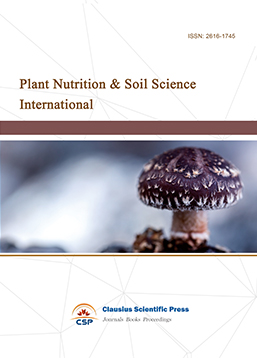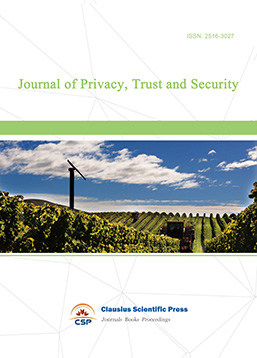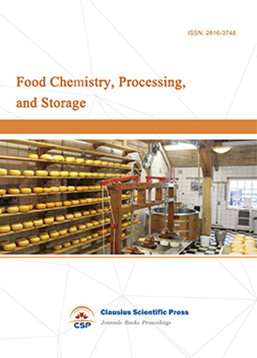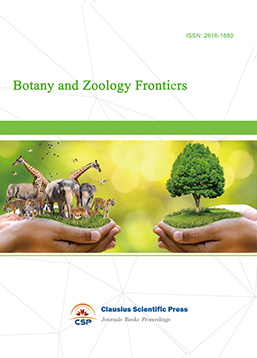Physicochemical Properties and Antitumor Activities of Polysaccharides Separated from Chinese Chestnut by Membrane Filtration
DOI: 10.23977/afshn.2023.050109 | Downloads: 22 | Views: 440
Author(s)
Tianxing Shi 1, Jinyan Xue 1, Yueying Wang 1, Yulu Chang 1, Yuzi Wang 1, Liman Liang 1, Kui Niu 1
Affiliation(s)
1 School of Chemical Engineering, Hebei Normal University of Science and Technology, Qinhuangdao, Hebei, 066004, China
Corresponding Author
Kui NiuABSTRACT
Chestnuts, characterized by their dual attributes of nutritional and health-promoting properties, are notably rich in polysaccharide constituents. In this study, we employed hot water extraction to extract the water-soluble saccharide components from chestnut kernels. The extracted solution underwent membrane separation and column chromatography for the isolation and purification of polysaccharides, yielding N-CP, a neutral polysaccharide with a purity of 95.20%. N-CP exhibited characteristic infrared absorption features of typical polysaccharide compounds, consisted primarily of arabinose, galactose, and glucose, with a weight-average molecular weight of 482.34 kDa. The anti-proliferative activity of N-CP was evaluated against Hela and A549 cancer cell lines using the CCK-8 assay, with respective IC50 values of 35.45 µg/mL and 25.94 µg/mL. The results offer an efficient method for the extraction and purification of functional chestnut polysaccharides, laying a foundation for their application in functional foods and anti-tumor pharmaceuticals.
KEYWORDS
Physicochemical property, Antitumor activity, Chestnut polysaccharide, Membrane filtrationCITE THIS PAPER
Tianxing Shi, Jinyan Xue, Yueying Wang, Yulu Chang, Yuzi Wang, Liman Liang, Kui Niu, Physicochemical Properties and Antitumor Activities of Polysaccharides Separated from Chinese Chestnut by Membrane Filtration. Advances in Food Science and Human Nutrition (2023) Vol.5: 69-76. DOI: http://dx.doi.org/10.23977/afshn.2023.050109.
REFERENCES
[1] Yang, F., Huang, X., Zhang, C., Zhang, M., Huang, C. and Yang, H. (2018) Amino acid composition and nutritional value evaluation of Chinese chestnut (Castanea mollissima Blume) and its protein subunit. RSC Advances 8(5), 2653-2659.
[2] Gonçalves, B., Pinto, T., Aires, A., Morais, M.C., Bacelar, E., Anjos, R., Ferreira-Cardoso, J., Oliveira, I., Vilela, A. and Cosme, F. (2023) Composition of Nuts and Their Potential Health Benefits— An Overview. Foods 12(5), 942.
[3] Lee, H.S., Kim Ej Fau - Kim, S.H. and Kim, S.H. (2011) Chestnut extract induces apoptosis in AGS human gastric cancer cells. Nutrition Research and Practice 5(3):185-191.
[4] Yu, S., Zhao, Y., Zhang, F.L., Li, Y.Q., Shen, W. and Sun, Z.Y. (2020) Chestnut polysaccharides benefit spermatogenesis through improvement in the expression of important genes. Aging. (Albany NY) 12(12), 11431-11445.
[5] Han, B., Guo, J., Zhou, B., Li, C., Qiao, T., Hua, L., Jiang, Y., Mai, Z., Yu, S., Tian, Y., Zhang, X., Lu, D., Wang, B., Sun, Z. and Li, L. (2023) Chestnut polysaccharide rescues the damaged spermatogenesis process of asthenozoospermia-model mice by upregulating the level of palmitic acid. Front Endocrinol (Lausanne) 14, 1222635.
[6] Tang, M., Hou, F., Wu, Y., Liu, Y. and Ouyang, J. (2019) Purification, characterization and tyrosinase inhibition activity of polysaccharides from chestnut (Castanea mollissima Bl.) kernel. International Journal of Biological Macromolecules 131, 309-314.
[7] Hou, F., Wu, Y., Kan, L., Li, Q., Xie, S. and Ouyang, J. (2016) Effects of Ultrasound on the Physicochemical Properties and Antioxidant Activities of Chestnut Polysaccharide. International Journal of Food Engineering 12(5), 439-449.
[8] Giacobbo, A., Bernardes, A.M. and de Pinho, M.N. (2017) Sequential pressure-driven membrane operations to recover and fractionate polyphenols and polysaccharides from second racking wine lees. Separation and Purification Technology 173, 49-54.
[9] Xu, X., Yang, Y., Liu, T. and Chu, B. (2022) Cost-effective polymer-based membranes for drinking water purification. Giant 10, 100099.
[10] Xie, J.H., Shen, M.Y., Nie, S.P., Zhao, Q., Li, C. and Xie, M.Y. (2014) Separation of water-soluble polysaccharides from Cyclocarya paliurus by ultrafiltration process. Carbohydrate Polymers 101, 479-483.
[11] Tang, W., Liu, C., Liu, J., Hu, L., Huang, Y., Yuan, L., Liu, F., Pan, S., Chen, S., Bian, S., Huang, X., Yin, J. and Nie, S. (2020) Purification of polysaccharide from Lentinus edodes water extract by membrane separation and its chemical composition and structure characterization. Food Hydrocolloids 105, 105851.
[12] Ai, C., Meng, H., Lin, J., Zhang, T. and Guo, X. (2020) Combined membrane filtration and alcohol-precipitation of alkaline soluble polysaccharides from sugar beet pulp: Comparision of compositional, macromolecular, and emulsifying properties. Food Hydrocolloids 109, 106049.
[13] Qiao, D., Liu, J., Ke, C., Sun, Y., Ye, H. and Zeng, X. (2010) Structural characterization of polysaccharides from Hyriopsis cumingii. Carbohydrate Polymers 82(4), 1184-1190.
[14] Sun, L., Su X. and Zhuang Y. (2016) Preparation, characterization and antiglycation activities of the novel polysaccharides from Boletus snicus. International Journal of Biological Macromolecules 92, 607-614.
[15] Qin, H., Huang, L., Teng, J., Wei, B., Xia, N. and Ye, Y. (2021) Purification, characterization, and bioactivity of Liupao tea polysaccharides before and after fermentation. Food Chemistry 353, 129419.
| Downloads: | 1047 |
|---|---|
| Visits: | 29692 |

 Download as PDF
Download as PDF



